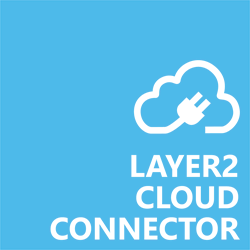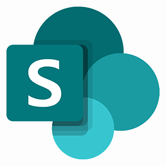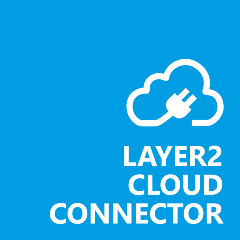HOW TO CONNECT SMARTSHEET WITH SHAREPOINT
This "how-to-connect" documentation will explain the initial configuration of an example connection from Smartsheet to a SharePoint Online List in Office 365. We will be synchronizing data stored in Smartsheet.
Find more information in our Layer2 Cloud Connector User Documentation. Or download our free trial.
Connect Smartsheet to a SharePoint Online List step by step
You will learn how to configure Smartsheet, SharePoint and Layer2 Cloud Connector. We provide you with practical hints and known issues for a smooth start.
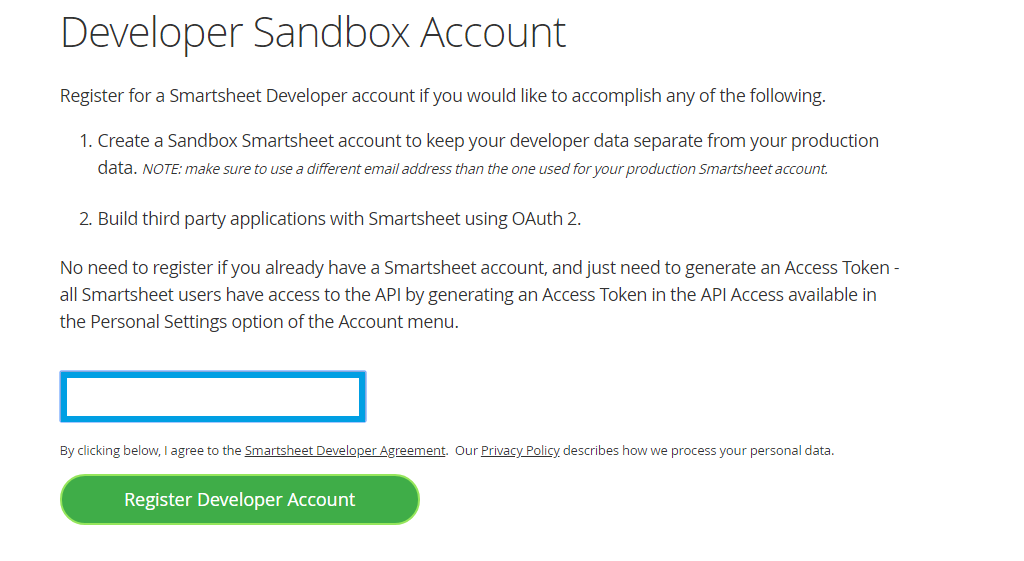
Step 1 - configuring Smartsheet
To connect to Smartsheet, you must create an application first. Go to https://developers.smartsheet.com/register register your account.
After your registration you will have access to the developer tools in your profile.

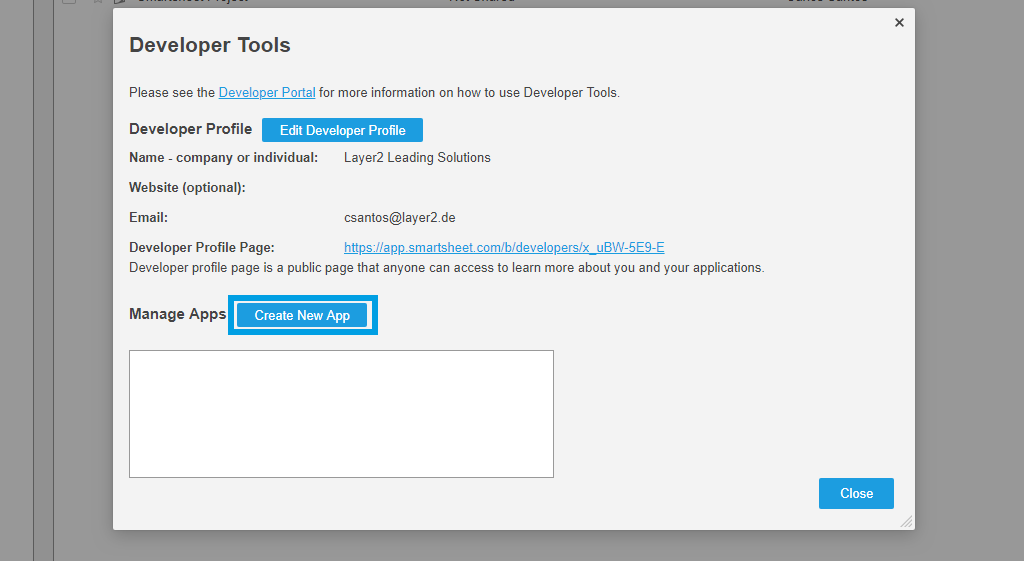
Open it and create a new app.
Set the needed information. The App redirect URL must be http://localhost:33333
Copy your app client and secret. We are going to use these in the Layer2 Cloud Connector.
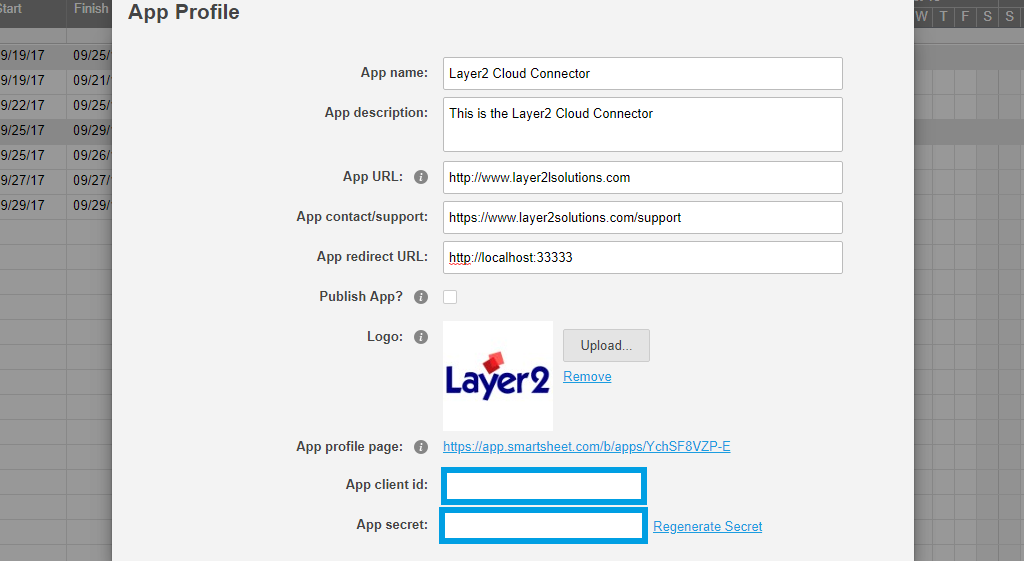
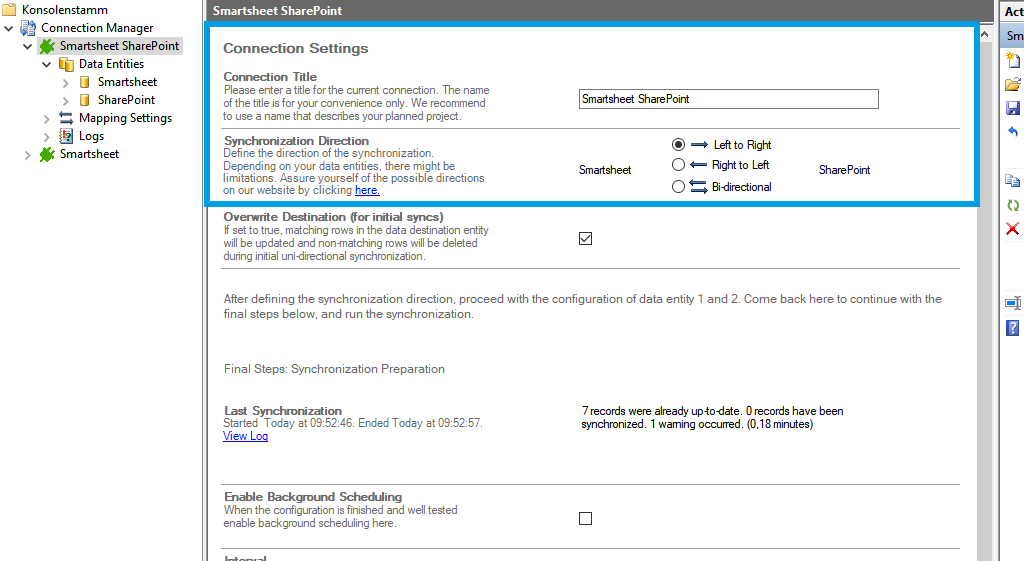
Step 2 - creating a new connection
Create a new connection by using the Create New Connection option in the Actions pane (right-hand side). The new connection will appear at the bottom of the Connection Manager List (left-hand side). Click on your newly created connection to open the connection configuration settings.
Choose a meaningful name for your connection and replace the current "New Connection" Connection Title with it.
Connections to Smartsheet can be bi-directional. An initial connection should always be uni-directional to assure that both data entities are identical before switching to bi-directional. Therefore, choose Left to Right as Direction. You can change this setting after your initial synchronization finished successfully.
Step 3 - configure the Data Entity 1
We will now set up our Data Entities. Go to the data entity “Data Entity 1” to open the configuration settings.
Choose a Data Entity Title. It is recommended to give your entities meaningful names to maintain an overview when you decide to set up multiple connections.
Select the Data Provider for Smartsheet from the data provider list. You can search for Smartsheet by typing into the selection box.
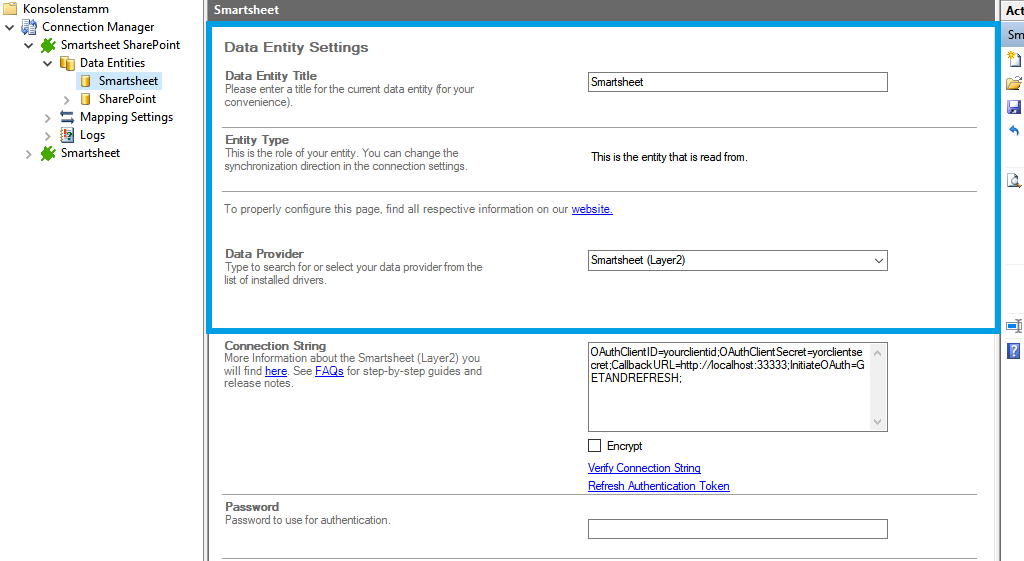
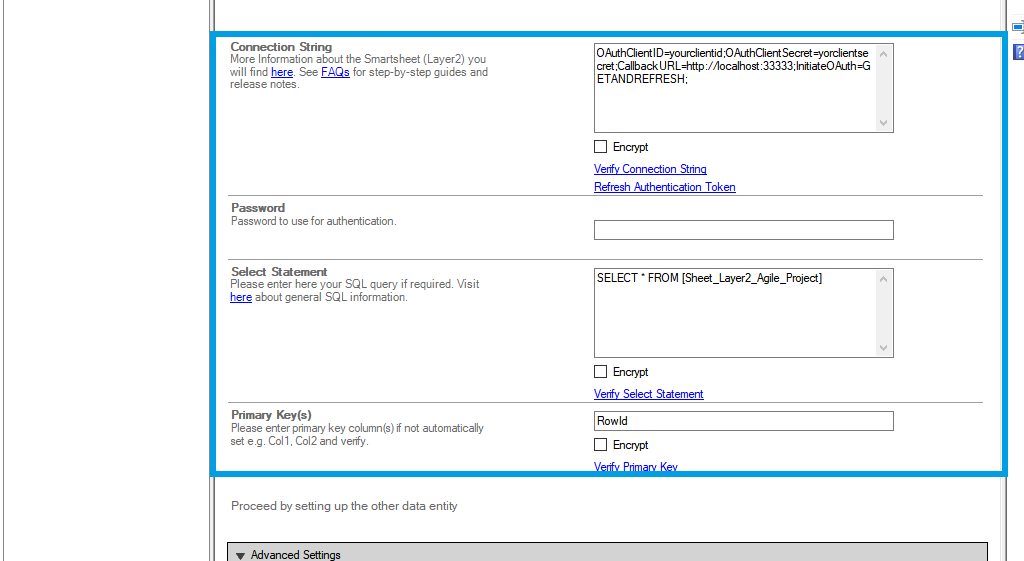
For the Connection String, we need the information mentioned in step 1. You can copy the below connection string and adjust it to match your gathered information. Use the Verify Connection String option to evaluate if the provided connection string is valid.
OAuthClientID=yourclientid;OAuthClientSecret=yourclientsecret;CallbackURL=http://localhost:33333;InitiateOAuth=GETANDREFRESH;
- "OAuthClientID=yourclientid;" this property must be set to the client id from step 1.
- "OAuthClientSecret=yourclientsecret;" this property must be set to the client secret from step 1.
- "CallbackURL=http://localhost:33333" this property must be set to the same callbackURL from step 1.
- "InitiateOAuth=GETANDREFRESH" this property defines that a new token will be generated after this one is used.
The Select Statement text box is used to define specific data queries. We will be gathering all results from our Sheet_Layer2_Agile_Project. You can copy the below select statement and adjust it to match your needs. Save your changes by using the right-hand pane option Save Changes.
SELECT * FROM [Sheet_Layer2_Agile_Project]
To check if all necessary columns are received, you can use the Preview Data option on the right-hand pane which will provide you with a pop-up window showing your sample data from your Smartsheet entity.

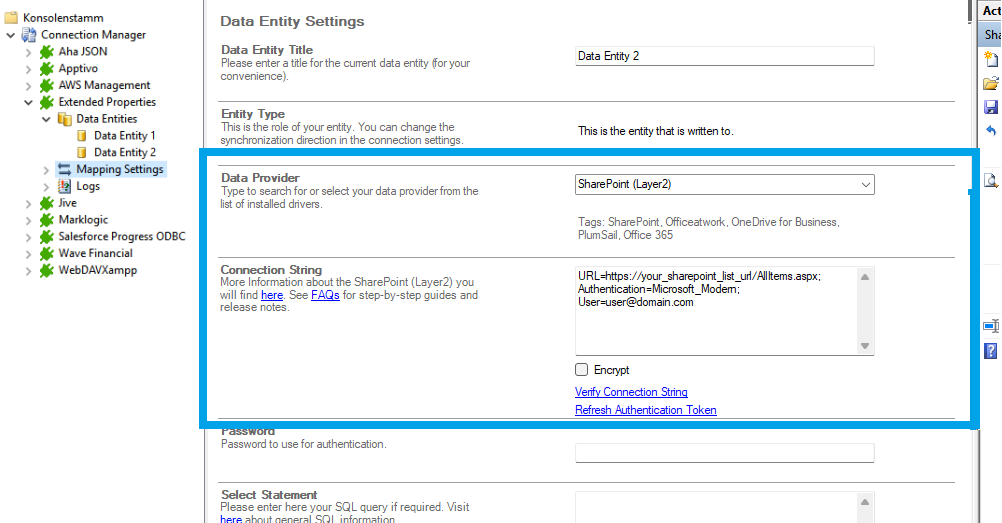
Step 4 - configure the Data Entity 2
We are going to send the data to a custom SharePoint Online list. It's required that you set up this list prior to the next steps. Your list should contain matching columns according to your source entity.
Use the left-hand pane to switch to the data entity "Data Entity 2". We will be using the Layer2 SharePoint Provider for this setup.
For more information about the SharePoint provider visit:
https://www.layer2solutions.com/support/cloud-connector-faqs/layer2-csom-sharepoint-ado-net-provider.
You can copy the Connection String which contains the minimum of required properties to connect to your custom SharePoint Online list.
Save your changes by using the right-hand pane option Save Changes.
URL=https://your_custom_sharepoint_list_url/AllItems.aspx;Authentication=Microsoft_Modern;
- "URL=https://your_custom_sharepoint_url/AllItems.aspx;" this property defines the URL of your custom list that will be addressed.
- "Authentication=Microsoft_Modern;" this property will determine the authentication method used. Microsoft_Modern is the default authentication method to access Microsoft Office 365 / SharePoint Online and should work in most cases, even if the SharePoint site is connected to an ADFS. This authentication does not need any further connection string settings, other than the URL of the connected system.
- Optional: "User" parameter for information about the account that has been used for the authentication.
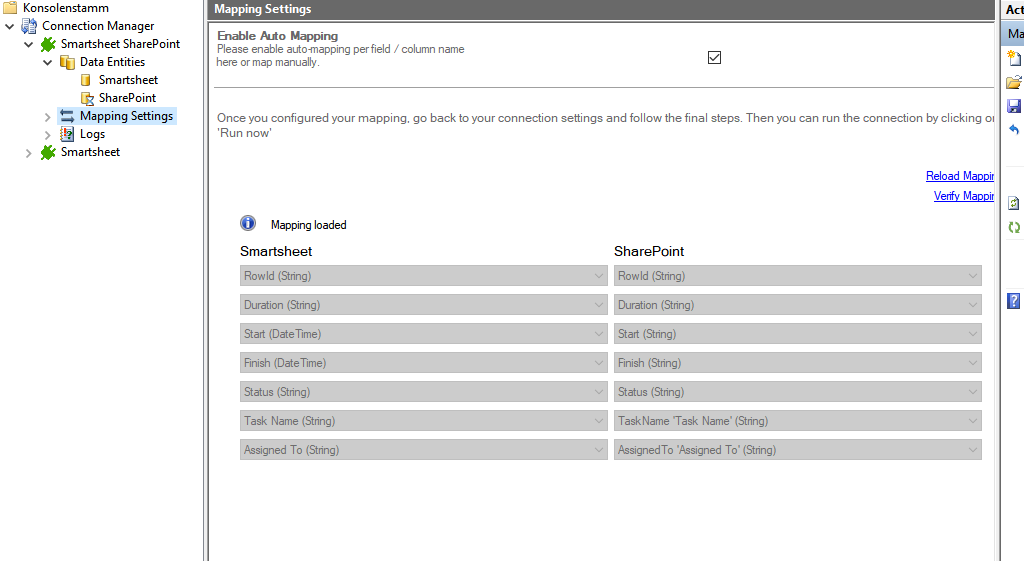
In the next step, we will configure our mapping settings. Click on the Mappings option on the left-hand pane. If your fields from SharePoint are named identical to the fields from your source system, the Enable Auto Mapping option will match those columns. Disabling this option allows you to match your columns as needed. We enabled auto-mapping in our setup. Save your changes by using the right-hand pane option Save Changes.
Step 5 - running your connection
To run your connection switch back to the main connection configuration node and use the Run Now Button located on the bottom of the setup page. The Run Synchronization Toolbox will also display the synchronization process.
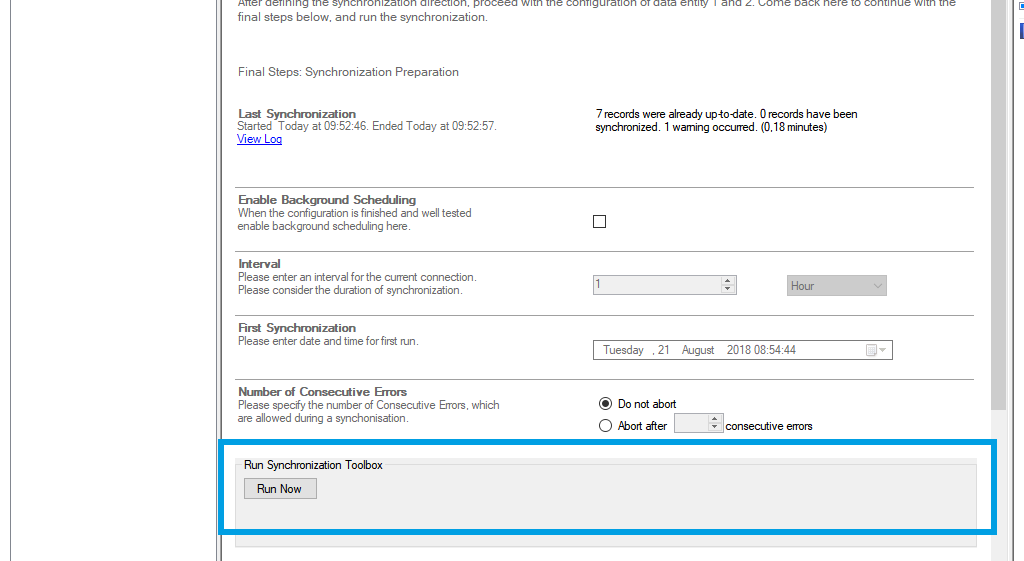

Below is a data preview of the information we have accessed in our source entity:
This will be the result in our SharePoint Online list after our initial successful synchronization:
If you want to use a bi-directional synchronization, you can now switch your connection direction after our first initial synchronization run finished successfully. See section 3.1 for further information.
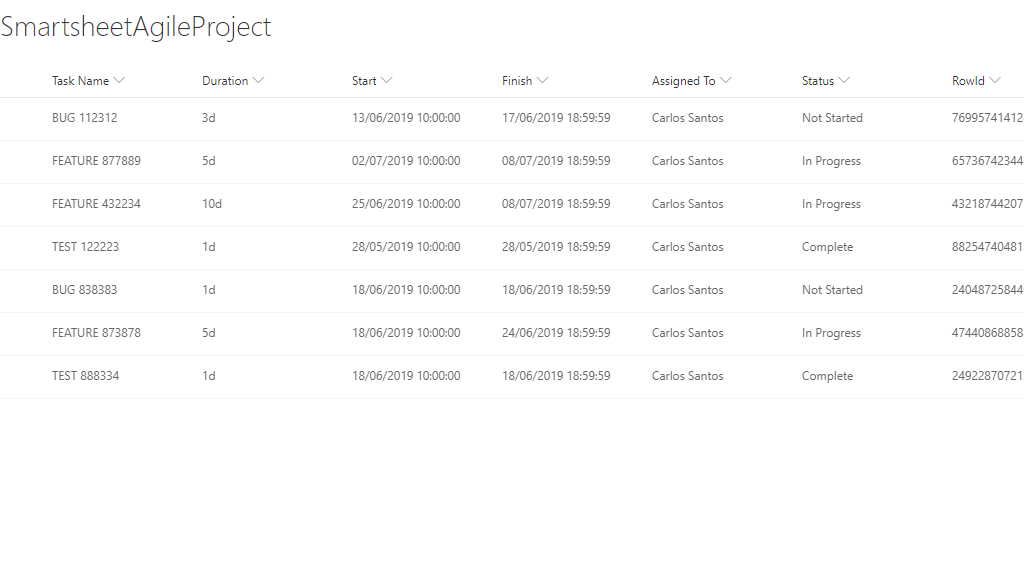
Smartsheet integration and synchronization made easy
Are you ready to unlock your full potential and integrate your data for seemless collaboration?
Smartsheet to SharePoint Online List - hints and known issues
Connection direction
As far as tested, this connection supports uni-directional as well as bi-directional synchronizations.
After adjusting the direction to bi-directional, you should check your Mappings settings again because some systems might include read-only columns that cannot be mapped directly.
We also recommend choosing a Conflict Resolution that matches your environment's needs. You can find out more about the different conflict resolutions in our Layer2 Cloud Connector User Documentation.
Data model
To see all the tables and views you can access with the Smartsheet provider, use these queries in the Select Statement:
SELECT * FROM sys_tables
SELECT * FROM sys_views
If there are more tables or views available, you can load them with the option "load more" in the popup window.
Pop-up
When clicking on Preview Data, some browser versions are not supported. You can change the selected browser version for the Preview Data pop-up window adding or changing a specific registry key in Windows.
Open your registry editor and follow this path:
HKEY_CURRENT_USER\Software\Microsoft\Internet Explorer\Main\FeatureControl\FEATURE_BROWSER_EMULATION
Create a new DWORD (32bit) with the name mmc.exe and set the decimal value to 11001. Restart the Cloud Connector.
You can find more information about it here.
Backend service and authentication
The connection to this system uses a custom authentication. The provider needs the running account connected to the backend service from the Cloud Connector.
Open services.msc and search for the Layer2 Cloud Connector Backend Service. Right-click on it and go to Properties. Set your account with the password in the tab Log On. Restart the service. If you update your Layer2 Cloud Connector, this step must be repeated.

